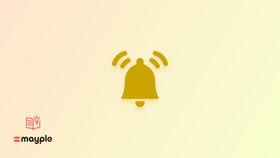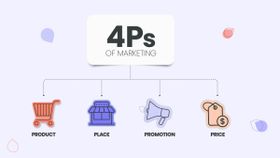What is Real-Time Marketing?
Real-time marketing is the strategy of engaging with customers or prospects based on current events, industry trends, or immediate feedback.
Updated May 5, 2024.

Real-time marketing is the strategy of engaging with customers or prospects based on current events, industry trends, or immediate feedback. It involves creating marketing content "on-the-fly" that is relevant to what's happening at the moment, leveraging ongoing trends or occurrences to promote a brand or product in a way that resonates with the audience instantly.
This approach requires a high level of agility and responsiveness from marketers, as it often involves capitalizing on opportunities that can arise and change quickly.
For example, if a particular topic is trending on social media, a company might use that trend to create relevant content or offers that align with the brand's message and values. This strategy allows businesses to appear more human and connected with their audience, as they are actively participating in the same conversations as their potential customers.
A successful real-time marketing campaign isn’t just about jumping on trends - it’s about meaningful engagement. So make sure to respond to any DMs and comments during the campaign, on multiple platforms. Use a listening tool like Buffer or SproutSocial to monitor hashtags and brand mentions.
How real-time marketing works
Real-time marketing works by monitoring current events, social media trends, and customer interactions to identify opportunities for immediate marketing action. This could be anything from a viral social media challenge to a major news event, or even real-time analytics showing a surge in specific online behaviors. Marketers must then quickly create and disseminate content, offers, or responses that align with these insights.
Technology plays a critical role here with social listening tools and data analytics platforms providing the necessary data and channels to execute strategies effectively. And in order to make these campaigns work you need some really creative people on your marketing team.
An example of real-time marketing at work is when brands engage with major sporting events as they happen. A memorable moment, play, or outcome can be instantly turned into a relatable ad, meme, or social media post, connecting the brand with the audience's current experience and emotions.
The benefits of real-time marketing
There are several benefits to this digital marketing strategy.
- Build an audience - The primary benefit of real-time marketing is its ability to create a deep connection with the audience by tapping into their current experiences and emotions with real-time responses.
- Boost engagement - This relevance can significantly boost engagement rates, as the content is more likely to resonate with what the audience cares about at that moment.
- Improve brand awareness - real-time marketing can increase brand visibility and recognition as it often leads to higher shares and interactions on social media, broadening the reach organically. It also positions a brand as dynamic and responsive, enhancing its image and customer perception. This approach shows that a company is not just a faceless entity but is actively involved and engaged with the world and its audience.
- Save on marketing costs - it can lead to cost efficiencies in marketing spend. Instead of allocating large budgets for prolonged campaigns, companies can use real-time marketing tactics to achieve high-impact results with more focused and often less expensive efforts, especially when leveraging organic social media marketing.
Examples of real-time marketing
A classic example of real-time marketing is Oreo’s “You can still dunk in the dark” tweet during the 2013 Super Bowl blackout. This quick and clever response to an unexpected event captured massive attention and engagement, showcasing the power of timely, relevant content.
Another example is the ALS ice bucket challenge that went viral in 2014. Brands jumped on the wagon and created many viral videos that not only raised money for an important cause but also put them on the map.
Sometimes, an event can happen on social media rather than in real life. Customers have been complaining to Wendy's for two years because they removed chicken nuggets from the menu. So the company decided to bring them back and make a HUGE deal out of it - they gave away 2 million spicy nuggets, and the campaign received over 2 million likes in under a week.
How marketers use real-time marketing
Marketers use real-time marketing to enhance customer engagement, improve brand perception, and increase the effectiveness of their marketing efforts. By staying attuned to current trends, social conversations, and customer feedback, they can create content that is immediately relevant and engaging.
For example, during live events or trending occurrences, marketers can create and share content that aligns with the event’s theme, capitalizing on the heightened attention and interest from the audience.
Real-time marketing is also used to personalize the customer experience. By analyzing real-time data, marketers can deliver personalized messages, offers, or content at the moment when it’s most relevant to their target audience, increasing the chances of conversion and fostering a more personal connection between the brand and its target audience.
5 tips for creating a spontaneous real-time marketing strategy
Here are some ideas you can use to structure your strategy.
- Talk to your social media team and find out which posts tend to go viral, what type of engagement you get, and what type of questions/comments you get from individual customers.
- Look at your customer reviews on all platforms (whether that's online marketplaces, your own site, or review websites) and jot down some of the most memorable ones. Then, use those as inspiration for your content strategy.
- Look at the most catchy marketing initiatives in your industry to draw inspiration.
- Look up some digital PR agencies and get an idea of the type of campaigns they have created in the past. You might want to use some of them as key partners to promote your campaign.
- Study real-time events and use marketing automation to aggregate all major news into one spreadsheet. If you approach this systematically, you will get a competitive advantage over other brands that are trying to go viral.






